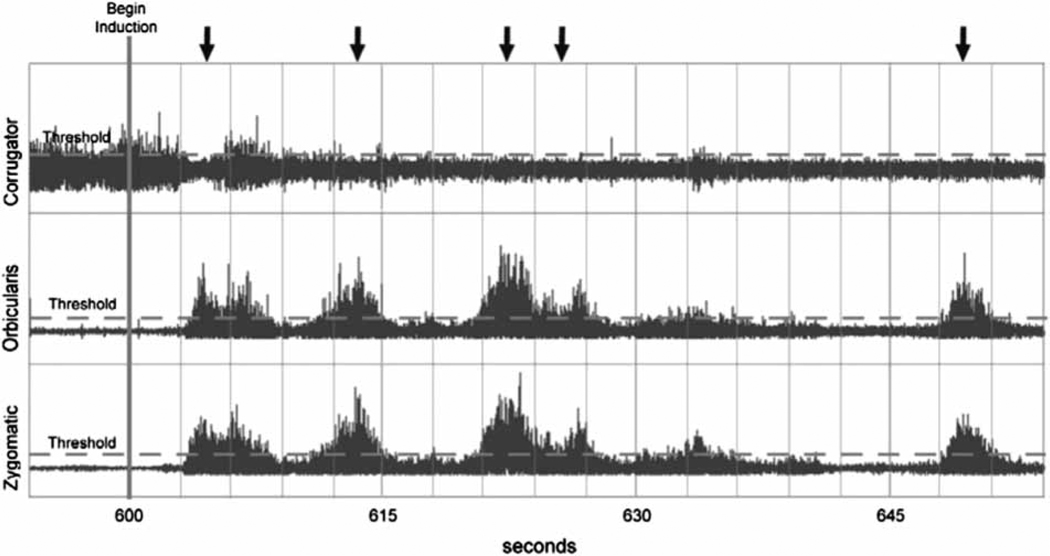Figure 1.
Sample corrugator supercilii, orbicularis oculi, and zygomatic majoris activity during a positive emotion induction. For purposes of scoring, EMG recordings were divided into 3-second bins. For each bin, a muscle was scored as active if its mean activity was greater than a baseline threshold. A Duchenne smile was scored when zygomatic majoris and orbicularis oculi were simultaneously activated while corrugator supercilii remained inactive. A non-Duchenne smile was scored when zygomatic majoris was the only muscle active. A furrowed brow was scored for bins in which corrugator supercilii was the only active muscle. The above example depicts a high frequency (approximately 28%) of Duchenne smiles during the first minute of an emotion induction. Arrows at the top of the figure indicate bins scored as Duchenne smiles.

